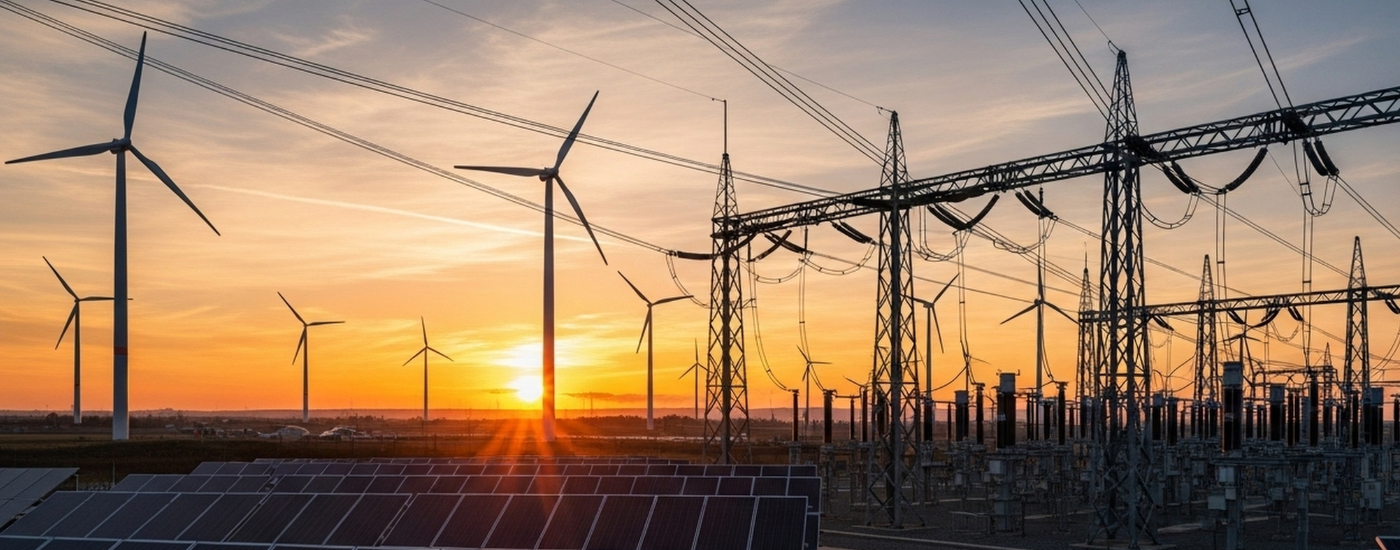The latest summary edition of our monthly Australian energy & environmental market update is now available. Keep reading for energy and carbon pricing movements, policy updates and other news.

This month we cover energy and environmental market movements, Queensland's Renewable Transformation and Jobs Act 2024, how very fast FCAS continues to reward batteries and dominate total FCAS costs, Metis Energy's first PPA for Australian solar and record high VEEC prices.
Keep reading for an overview of key market developments and a discussion of the impact of these announcements.
A comprehensive report with additional insights, charts and commentary from our industry analysts, is available to paid subscribers. Contact our team to find out more.


For a comprehensive update on the ACCU market, read our ACCU Monthly Market Report here.



Queensland Government has enshrined its 80% renewable energy target by 2035 into law and will reinforce it with a suite of other supporting measures.
The Queensland Government's Renewable Transformation and Jobs Act 2024 has enshrined their 80% renewable energy target into law in hopes of providing certainty to their communities and industry stakeholders.
The state has staged their renewable energy targets as follows:
In addition, Queensland has also legislated a suite of other measures to reinforce their energy transition commitments. These include:
Numerous frameworks have been proposed to achieve a co-ordinated transformation. The most notable is a blueprint for building the Queensland SuperGrid, which encompasses all potential renewable energy zones (REZs) - the planning process will be reviewed and updated every 2 years from 2025 onwards.

Very fast FCAS continues to reward batteries and dominate total FCAS costs.
To maintain the NEM's system frequency within the normal operating frequency band of 49.85-50.15 Hz, AEMO offers an array of frequency control ancillary service (FCAS) products for correcting minor supply/demand deviations and major contingency events.
The very fast FCAS markets commenced their lower 1 sec (L1SE) and raise 1 sec (R1SE) offerings in October 2023.
Total FCAS costs continued to drop this quarter with $29 million in payments, a $4 million drop from Q4 2023.
R1SE alone contributed 47% of total FCAS costs this quarter - lower 6 sec (L6SE) was the second highest contributor at only 14% total share.
While very fast FCAS products averaged at $18/MWh in Q4 2023 across the NEM, the average prices for these have gone in either directions this quarter:
Since Q4 2023, the FCAS market share of batteries grew from 50% to 57% - coal suffered the most with a 3% drop.
The introduction of very fast FCAS also drove an increase in battery enablement1, which supplied 75% of total enablement for very fast FCAS in Q1 2024.

Singapore-based Metis Energy has signed a PPA for the 94 MW Gunsynd solar farm in Southwest Queensland – their first ever with an Australian solar project.
With support of the CORE Markets advisory team, Metis Energy and industrial electricity retailer SmartestEnergy have signed a Power Purchase Agreement (PPA) for off-taking Gunsynd solar farm’s renewable generation, currently in construction near Goondiwindi in Southwest Queensland.
Metis Energy operates projects across Asia Pacific and will now mark their entrance into Australia.
Gunsynd Solar Farm is expected to commence operations by 2025 and will be capable of generating 250 GWh annually.
Metis will continue growing its Australian portfolio with the $1.2 billion Bendemeer Renewable Energy Hub Project, planned within NSW’s New England Renewable Energy Zone (REZ):

Victorian Energy Efficiency Certificate (VEEC) prices reached a historic high of $98.25/certificate at the end of April 2024.
Victorian Energy Efficiency Certificates (VEECs) are credits that each represent one tonne of CO2e emissions reduction and are created through eligible energy efficiency activities undertaken at residential, commercial, or industrial sites.
Since April 2023, VEEC prices have continued to climb and eventually reached a historic high of $98.25/certificate on 30 April 2024.
Following the challenges of Refrigerated Display Cabinet activities, numerous regulatory reforms were introduced to tighten the approvals of VEEC creation methods – the most notable being a $2.33 per certificate creation fee, which came into effect on 1 November 2023.
This creation fee is applicable to each certificate, regardless of whether they are successfully registered.
As VEECs must be created no longer than 6 months after the end of year in which an activity was completed, thus the effects of 2023 reforms may only become more visible as we approach June.
In 2023, 15 activities pertaining to lighting, water heating, and space heating had been revoked without the introduction of new activities. This VEEC supply constraint causes issues for forward contract holders that are unable to meet their obligations, thereby driving up demand in the spot market.
Learn more at the Victorian Energy Upgrades (VEU) Program Seminar in Melbourne on 23 May 2024

The events outlined in this month's update highlight the evolving nature of carbon, environmental and energy markets and the complexity of the net zero transition.
To discuss your unique requirements, get in touch with our team today to see how we can help.
Australian Energy & Environmental Market Update - April 2024

As the NEM Review lands, attention rightly turns to system-level settings. But much of the commercial change shaping renewable and firming supply is already unfolding inside over-the-counter (OTC) energy markets. This article sets out what’s already shifting commercially in a market under review.

As the NEM Review lands, attention rightly turns to system-level settings. But much of the commercial change shaping renewable and firming supply is already unfolding inside over-the-counter (OTC) energy markets. This article sets out what’s already shifting commercially in a market under review.